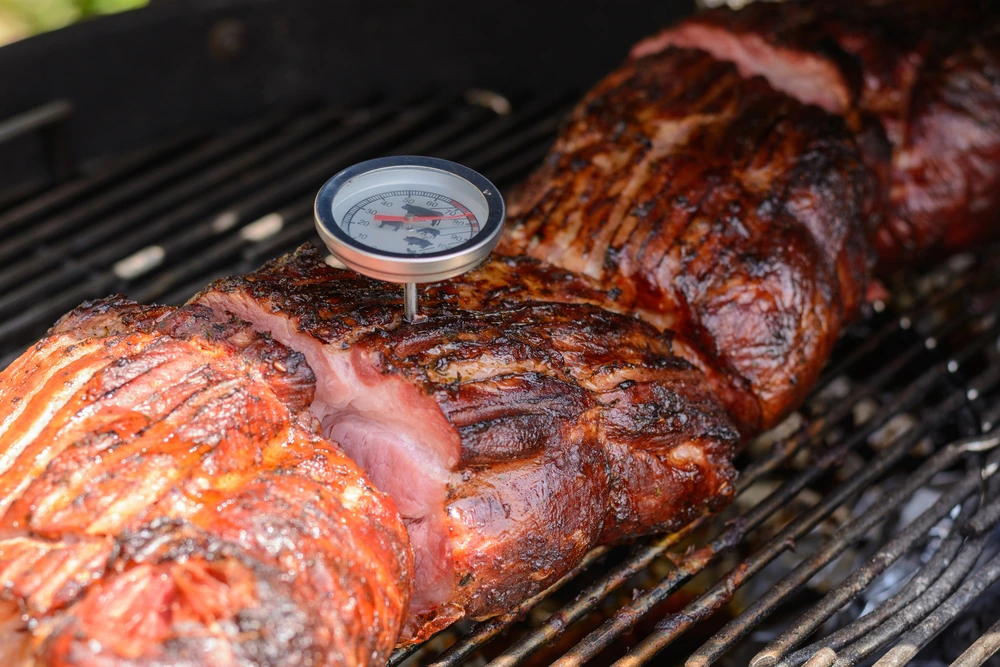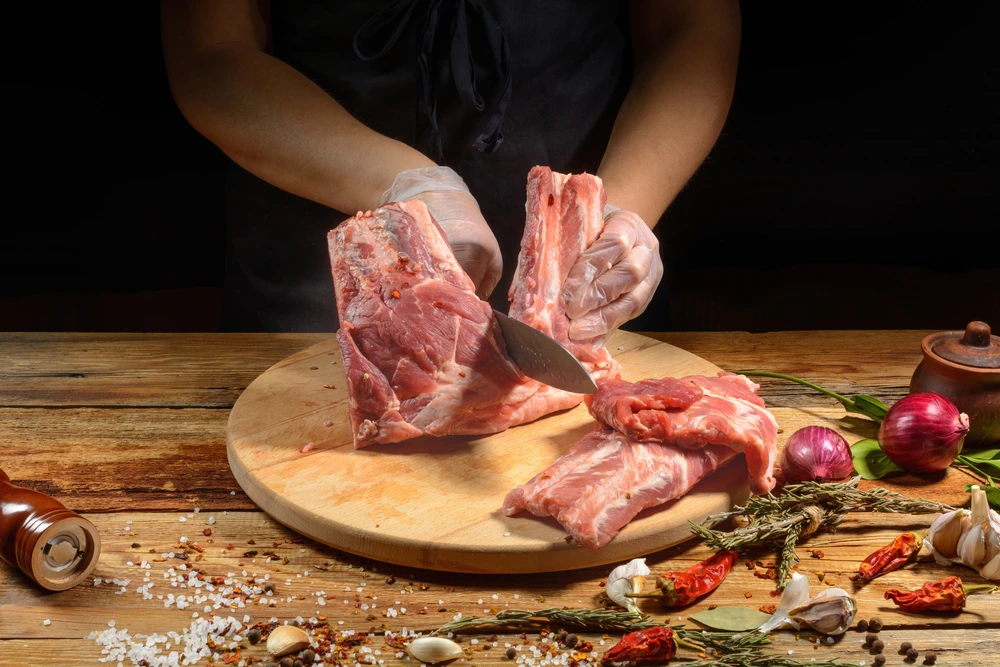Cooking beef to the right temperature is important both for food safety and achieving the desired taste. By using a meat thermometer and understanding the various temperature ranges, you can ensure that your beef meat is not only delicious but also safe to eat. In this article, we’ll list the recommended internal temperatures for various levels of doneness and discuss the importance of letting your beef rest after cooking.
Rare (45°C / 113°F)
For those who enjoy a rare beef dish, the ideal internal temperature is 45°C (113°F). At this level of doneness, the beef will be red in the center and slightly warm, but it’s essential to note that cooking beef to this temperature may not eliminate all harmful bacteria. So it’s highly important to source your meat from a trusted supplier.
Medium-Rare (55°C / 131°F)
A medium-rare beef dish should have an internal temperature of 55°C (131°F). This results in a warm, red center with a slightly firmer texture than rare beef. For many top chefs and beef enthusiasts, this is considered the perfect level of doneness, as it maintains the meat’s juiciness while offering a tender, flavorful piece of beef meat.
Medium (60°C / 140°F)
For medium-cooked beef, aim for an internal temperature of 60°C (140°F). At this level of doneness, the meat will be pink in the center and warmer than medium-rare. This is a popular choice for those who prefer a firmer texture without the meat being too dry.
Medium-Well (65°C / 149°F)
Medium-well beef should reach an internal temperature of 65°C (149°F). The meat will have only a hint of pink in the center and will be firmer but also less juicy than medium or medium-rare beef. This level of doneness is preferred by those who want a more cooked texture but still want to retain some moisture and tenderness in their meat. Most people choose this temperature to eat their beef meat.
Well-Done (71°C / 160°F and above)
For well-done beef, the internal temperature should be at least 71°C (160°F). At this stage, the meat will be brown throughout, with no pink remaining. Although well-done beef can be quite dry and tougher in texture, some individuals prefer their meat cooked to this level for personal preference or dietary reasons.
Let Beef Rest After Cooking: The Final Phase of Cooking
Highly Important! Regardless of your preferred level of doneness, it’s important to let the beef rest after removing it from the heat source, to enrich each flavour and juiciness. During this resting period, the temperature of the meat continues to rise slightly, further destroying any harmful microbes. Additionally, resting allows the juices to redistribute within the meat, resulting in a more flavorful and tender dish.
Understanding the appropriate internal temperatures for cooking beef is essential for both food safety and achieving your desired level of doneness. By using a meat thermometer and following the guidelines outlined in this article by Koutsioftis Farm, you can prepare delicious but most importantly safe beef dishes that cater to individual preferences. Whether you enjoy your beef rare, medium, or well-done, always remember to let the meat rest after cooking to maximize flavor, juiciness and tenderness. With practice, you’ll be able to consistently cook beef to perfection, ensuring a delightful dining experience for yourself and your guests.





